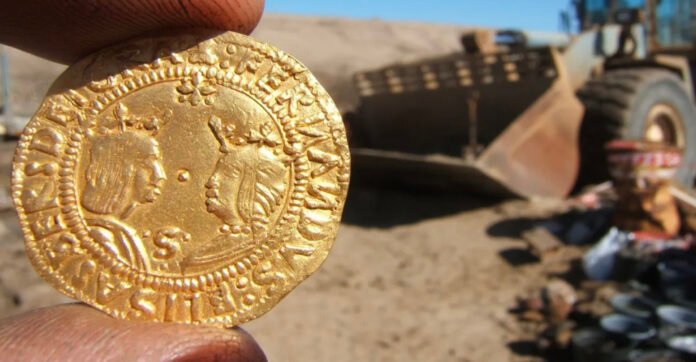A remarkable discovery has emerged from the sands of Namibia’s Skeleton Coast, where a 500-year-old Portuguese shipwreck—the Bom Jesus (The Good Jesus)—has been unearthed, revealing a treasure trove of gold, copper, and ivory. The ship, which vanished in 1533 during a voyage to India, remained buried beneath the desert until 2008, when it was found by diamond miners. The ship’s preservation was so extraordinary that archaeologists recovered 2,000 gold coins, silver artifacts, navigational tools, and even a musket over five centuries old.
This discovery, originally studied by researchers from the African Institute for Marine and Underwater Research, Exploration, and Education (AIMURE), offers a fascinating glimpse into the dangers and ambitions of the Age of Discovery. The findings highlight the historical significance of maritime trade routes, shedding light on the economic networks that connected Portugal to Africa, India, and beyond.
How a 16th-Century Shipwreck Ended Up in the Desert
The Namibian coastline, often called the “Skeleton Coast”, is infamous for its treacherous waters and deadly storms, making it a notorious shipwreck graveyard. Experts believe the Bom Jesus was caught in a powerful storm, pulling it too close to shore before colliding with a rock and capsizing. Over the centuries, shifting coastlines and encroaching desert sands concealed the wreck, preserving it until modern mining operations revealed its buried treasures.
Archaeologists and historians were initially skeptical about the ship’s identity, but the presence of 16th-century Portuguese gold coins helped confirm that it was, indeed, the lost Bom Jesus. The coins were found in mint condition, likely due to being buried beneath the ship’s heavy wooden structure, which shielded them from environmental damage




